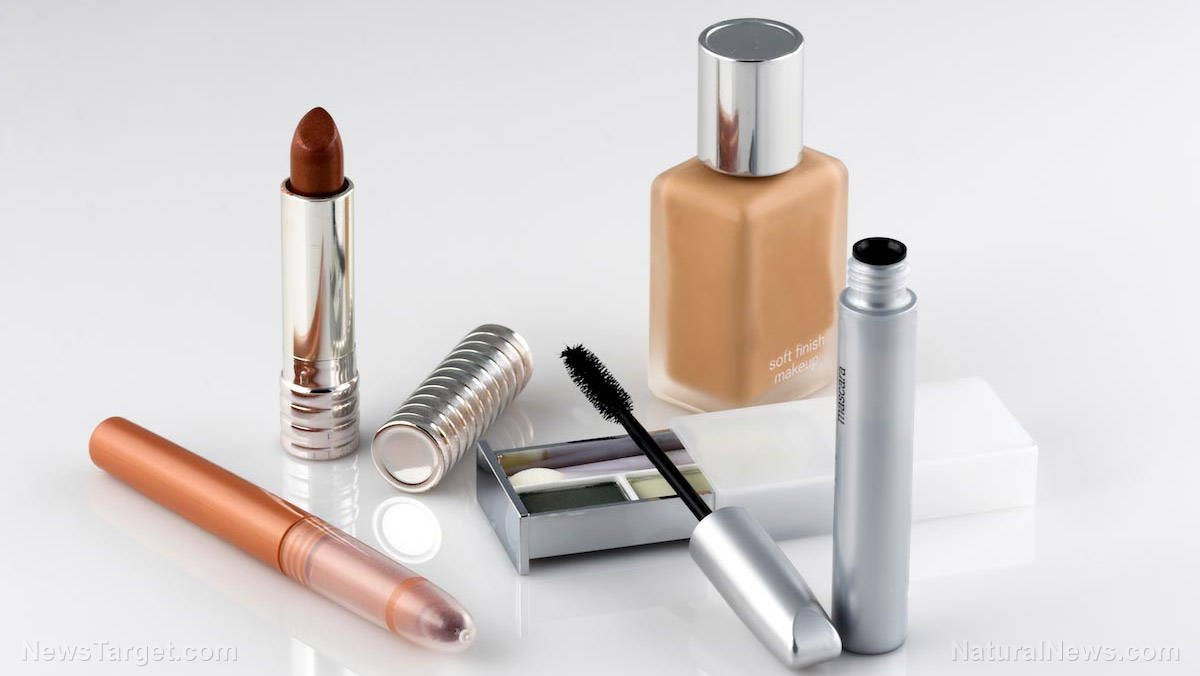 Parler
Parler Gab
Gab
Time to kick PFAS out of makeup
Personal care products do not have to be reviewed or approved by the Food and Drug Administration (FDA) before they hit the market – nor do they have to include a full list of ingredients. Manufacturers can hide their specific formulas behind vague terms such as "fragrance" or "flavor." As a result, tens of millions of consumers unknowingly rub products containing these hazardous chemicals in their skin and hair every day, noted Dr. Shruthi Mahalingaiah, reproductive endocrinologist director of clinical research at Massachusetts General Fertility Center. It is not surprising – but it is deeply troubling – when a study, published in Science of The Total Environment, analyzed menstrual blood from four study participants, researchers found traces of 1,748 environmental chemicals, including suspected reproductive toxicants such as organochlorines, parabens, phenols and phthalates. Policymakers, regulators and scientists need to take stronger action to protect the public from these toxic chemicals. The PFAS class, which includes more than 4,700 compounds, is linked to serious health issues, including cancer, obesity, decreased fertility and a weakened immune system. (Related: Toxic chemicals in cosmetics are increasingly HARMING consumers.) The popular brand Thinx recently settled a class action lawsuit over the presence of PFAS in ultra-absorbent period underwear that it had marketed as sustainable, organic and part of the solution for a "healthier world." Then there are the mineral and metal contaminants – the FDA has advised consumers not to use certain brands of blush, bronzer and eye shadow because they contain asbestos. The agency has also warned of hazardous levels of lead in kohl eyeliners.Cosmetics and personal care products lack government oversight
Chemicals and contaminants linked to cancer can be found in food, water and many other everyday products. But no category of consumer products is subject to less government oversight than cosmetics and other personal care products, said Scott Faber, EWG senior vice president of government affairs. The California Safe Cosmetics Program of the California Department of Public Health (CDPH) reported that since 2009, 595 cosmetic manufacturers have reported using 88 chemicals in more than 73,000 products that have been linked to birth defects or reproductive harm and cancer. As proposed in the California Assembly Bill 2762, the Toxic-Free Cosmetics Act, among the toxic chemicals that should be banned are:- Dibutyl and diethyl hexyl phthalates, which disrupt hormones and damage the reproductive system
- Formaldehyde, a known carcinogen
- Isobutyl and isopropyl parabens, which disrupt hormones and harm the reproductive system
- Long-chain PFAS, which have been linked to cancer
- M- and o-phenylenediamine, used in hair dyes irritate and sensitize the skin, damage DNA and can cause cancer
- Mercury, which can damage the kidneys and nervous system
- Methyl glycol, a type of formaldehyde
- Paraformaldehyde, a type of formaldehyde
- Quaternium 15, which releases formaldehyde
More related stories:
CHEMICALS LIST: Toxic ingredients in cosmetics and personal care products. #9) The "chemical love affair" – The most popular lipsticks, lotions and cosmetics are loaded with toxic heavy metals and endocrine disruptors. Top cosmetic and personal care chemicals that cause hormonal disruption. Sources include: NaturalHealth365.com Pubs.ACS.org EWG.org 1 HarvardPublicHealth.org ScienceDirect.com EWG.org 2 CDPH.CA.gov Brighteon.comStudy: Plastic pollution in some lakes is WORSE than the most contaminated parts of the oceans
By Olivia Cook // Share
Sen. Marco Rubio, other lawmakers demand answers on UFOs and UAP
By Laura Harris // Share
Biden admin backs LAB-GROWN MEAT made of CANCER cells as the “food of the future”
By Olivia Cook // Share
Ibuprofen kills thousands each year, so what’s the alternative?
By News Editors // Share
Swiss hospital reports 1 in 35 healthcare workers suffered sub-clinical heart damage after mRNA jab
By Lance D Johnson // Share
Governments continue to obscure COVID-19 vaccine data amid rising concerns over excess deaths
By patricklewis // Share
Tech giant Microsoft backs EXTINCTION with its support of carbon capture programs
By ramontomeydw // Share
Germany to resume arms exports to Israel despite repeated ceasefire violations
By isabelle // Share










